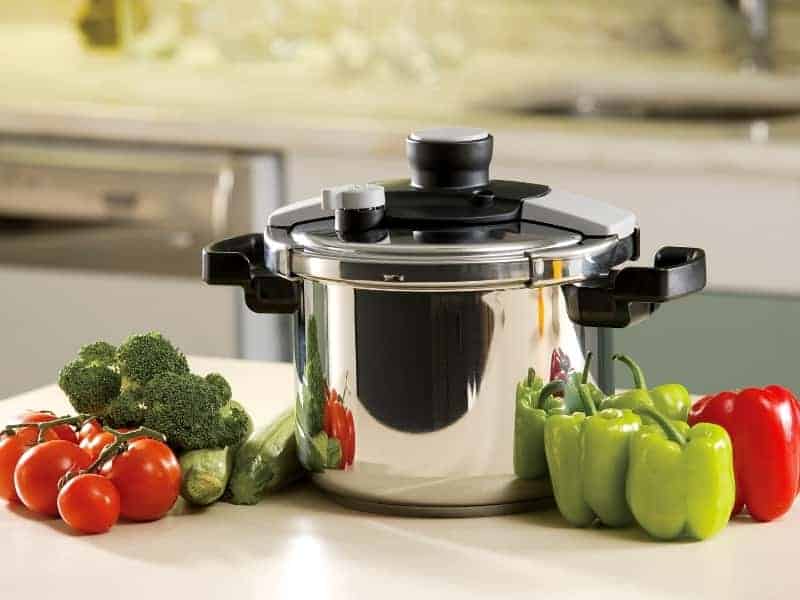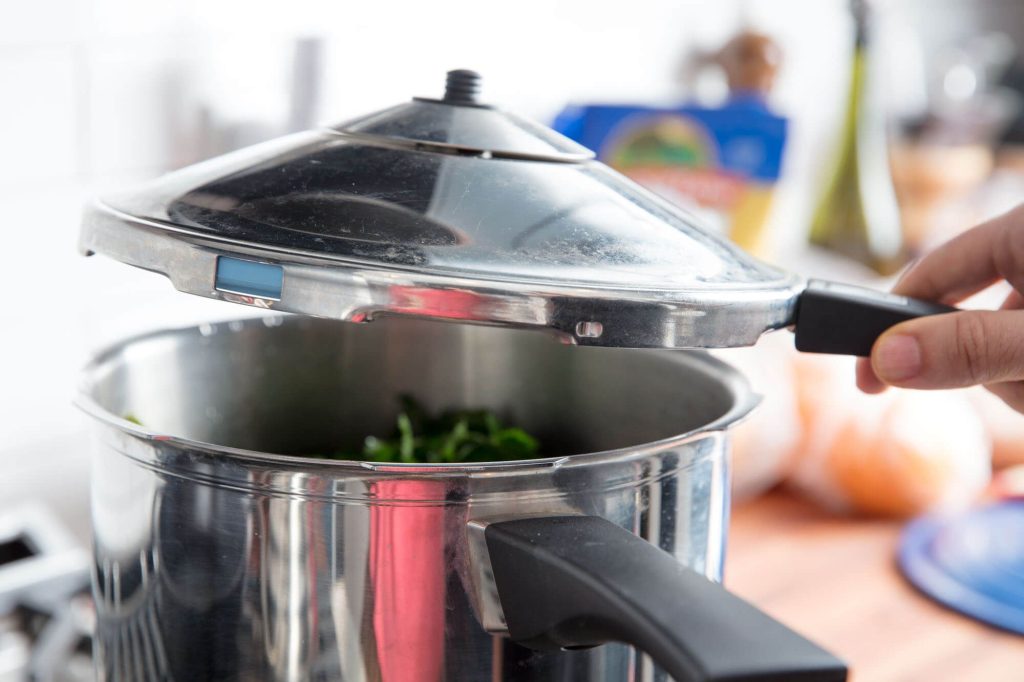Why Do Pressure Cooker Work Well in Higher Altitudes?

When cooking at high elevations, somewhere between 2,000 and 3,000 feet above sea level, the time, temperature, and recipe requirements alter dramatically. Because the boiling point of the water is lower, the environment is considerably drier, and the air contains less oxygen and atmospheric pressure, cooking takes much longer. So, why do pressure cookers perform so well at high altitudes? They save you from having to wait an inordinate length of time for your food to cook, and they assist your food to retain moisture that might otherwise evaporate at high elevations. This isn’t the only thing they help with; they’re also an effective tool for dealing with atmospheric pressure, they save your time and energy, and they’re ideal for use in hilly areas while trekking or camping.
Why are pressure cookers recommended for high-altitude cooking?
The temperature necessary to boil water will always be lower than at sea level, regardless of where you are above sea level. You’re looking at a four-degree Fahrenheit differential since the boiling point is 208 degrees Fahrenheit against 212 degrees Fahrenheit at sea level. This means that any cooking that relies on heat transmission through water or liquid will take longer. You would think that four degrees aren’t much. Still, due to the way chemical reactions operate, those four degrees can double or treble the cooking time necessary since the water takes considerably longer to reach maximum temperature (boiling point).
What reduces the ability of water to reach the boiling point?
The vapor pressure of the material must match the ambient pressure of the liquid to create the bubbling that we know as boiling. The liquid’s ambient pressure will be your atmospheric pressure levels. Air pressure is lower at high elevations, resulting in a slower rate of boiling.
Pressure Cookers Aid in the Combat of Low Atmospheric Pressure and Dry, Thin Air
Instead of cooking your meals for eight to twelve hours, you may use a pressure cooker to achieve the same or better results in an hour or two. How? Because the pressure cooker is a sealed vessel, it provides a highly wet, high-pressure atmosphere that is impossible to achieve at high altitudes. This, in turn, guarantees that your food does not become undercooked, that it does not lose moisture since it is not exposed to dry air, and that it combats the thin air and low atmospheric pressure by enabling your liquid to boil over its boiling point. It is crucial to remember that if you were to cook without a pressure cooker, you would have to extend your cooking time to compensate for the lower boiling point of water, as increasing the heat would not cook your food faster. It will instead only evaporate the water faster. A pressure cooker is the only appliance that prevents this without increasing the cooking time.
How Is Cooking Affected When Using a Pressure Cooker at High Altitudes?

If your pressure cooker has one pre-set weighted gauge, you must increase the cooking time to account for the lower cooking temperature. This is noted in the section below. If your pressure cooker contains more than one weight, you might be able to reduce cooking time by using a heavier weight alone. However, modifying the cooking time is strongly encouraged because it is a sure bet for safely preparing your dinner. Reduce the heat after you’ve reached the required pressure in your pressure cooker to avoid water evaporation. You’ll still want to keep a consistent pressure at or slightly over the correct gauge pressure. You can find out what this is in the owner’s handbook.
How Do you adapt pressure cooker recipes for Cooking at High Altitudes?
When using a pressure cooker at high elevations, it is frequent and simple to forget to adjust its time to cook your meal. The time you modify will vary on where you are cooking your meal because various altitudes demand different cooking time changes, but the general rule of thumb is 5% per 1,000 feet after 2,000 feet above sea level. The match works as follows: if your typical cooking time is thirty minutes at high pressure, double that amount by your percentage increase. This will tell you how many minutes you need to add to the regular cooking time to account for the altitude. Here are several examples:
- With a conventional cooking period of 30 minutes at 3,000 feet above sea level, the math looks like this: 30 x 0.05 percent = 1.5 minutes. As a result, your new cooking time is 31.5 minutes.
- With a conventional cooking period of 30 minutes at 7,000 feet above sea level, the math reads like this: 30 x 0.25 percent = 7.5 minutes. As a result, your new cooking time is 37.5 minutes.
- With a conventional cooking period of 30 minutes at 10,000 feet above sea level, the math reads like this: 30 x 0.40 percent = 12 minutes. As a result, your new cooking time is 42 minutes.
Another consideration for those cooking
High Altitude Does Affect Specific Foods Differently Too!

at high altitude using a pressure cooker is preparing the sort of food. Meat and poultry products contain bone, connective tissue, and muscle, containing more water, protein, and a greater mix of fat, minerals, and carbs. The more water content in the meat, the slimmer it is. At an altitude of 5,000 feet or above, the higher the water content of your food, the more prone it is to dry out and may require one-fourth of the extra cooking time. If you plan on cooking meat, poultry, or thin dishes like hamburgers, pork chops, or chicken breast, it is strongly advised that you obtain an internal thermometer and carry it with you.
- Raw meats such as pig, beef, and roasts should be cooked to an internal temperature of 145°F.
- Raw meat, such as ground beef, hog, or lamb, should be cooked to an internal temperature of at least 160 degrees Fahrenheit.
- Cook whole turkeys or chickens to an internal temperature of 165 degrees Fahrenheit. Don’t stuff your meat for maximum safety!
- Egg dishes can be cooked to a minimum internal temperature of 160°F.
Is it safe to pressure cook in a hilly area?

Yes, using a pressure cooker in mountainous places is safe, and it is advised because hilly areas frequently have relatively low air pressure. Like those used in high altitude settings, a pressure cooker can cook your food at a constant pressure independent of the ambient air pressure (atmospheric air), allowing you to cook your food faster despite the lower boiling temperature of the water.











